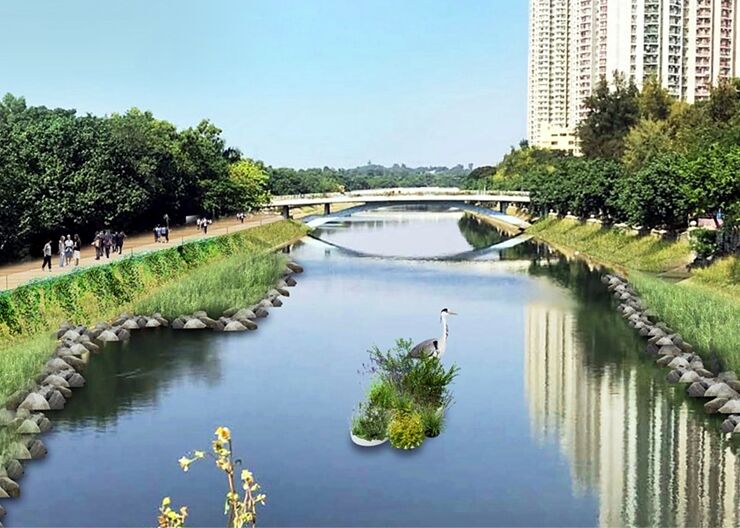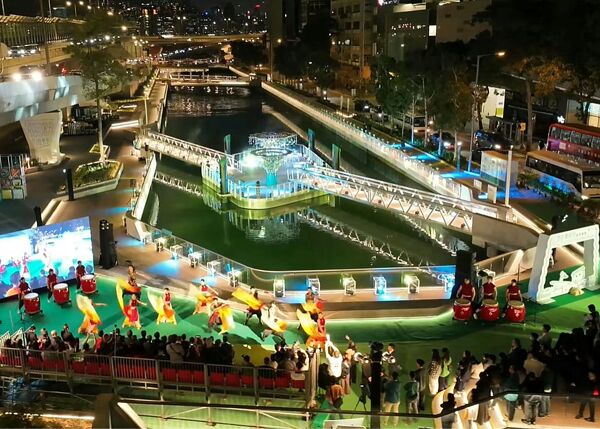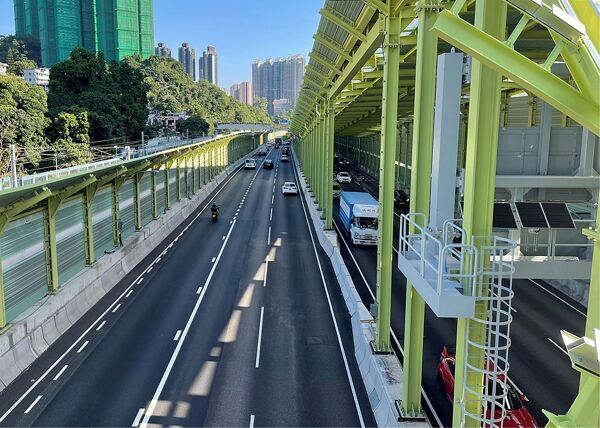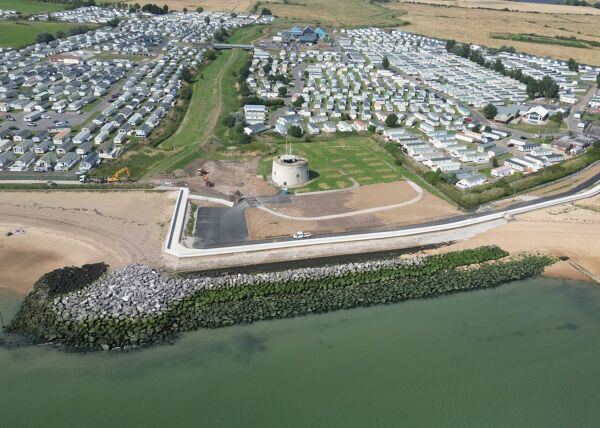
The Government of the Hong Kong Special Administrative Region has successfully used NEC to procure a pioneering feasibility study on sustainable ‘blue−green’ drainage infrastructure for the Hung Shui Kiu/Ha Tsuen new development area in the north-west New Territories.
The government’s Civil Engineering and Development Department (CEDD) engaged consultant Aecom Asia under a HK$10.8 million (£1 million) NEC3 Professional Services Contract (PSC) in December 2018 to work out a preliminary scheme, design criteria and implementation strategy for blue−green drainage infrastructure in the planned new-generation new town. The study is due to be completed in 2022.
The innovative provision of sustainable flood-attenuation facilities, including a flood retention lake and floodable open spaces, constituted a key part of the study, together with provision of sustainable drainage system (Suds) infrastructure and revitalisation of existing river channels and embankments for enhancement of biodiversity and hydraulic capacity.
For example, the proposed flood retention lake within the proposed 16 ha Regional Park has been designed with water and landscape features that will deliver a micro-climate cooling mechanism and promote biodiversity. They will also enhance climate resilience by attenuating peak surface runoff during extreme rainfall events. Similarly, the recreational areas such as football pitch, basketball and tennis courts at Regional Park have been designed as floodable open spaces for stormwater retention in extreme rainfall events.
The study was one of the pilot projects in Hong Kong where blue−green infrastructure acting as recreational facilities during normal days and providing stormwater retention to attenuate flood peaks during extreme weather. Such co-use of land will effectively combine leisure, biodiversity and flood attenuation roles in one place.
Mutual trust and co-operation
The chief engineer of CEDD West Development Office, Chung Lok-chin said the client and consultant fully embraced the NEC obligation to, ‘act in a spirit of mutual trust and co-operation’. ‘The project team swiftly established a common objective to smooth the timely implementation of the flood attenuation facilities. At the early stage of the study, risk reduction meetings were held and an action plan was formulated with mitigation measures such as early involvement with stakeholder departments.’
He says that one of the major challenges of the study was to collaborate with other government departments and stakeholders to resolve the management and maintenance issues of the multi-functional blue-green infrastructure. ‘For example, the Drainage Services Department (DSD), as a major stakeholder department, collaborated fully throughout the study by providing instant expert advice and comments on all the proposals devised.’
Chung says that as different stakeholder departments would be responsible for the management and maintenance of specific operations of the blue−green infrastructure according to their expertise, the project team held numerous meetings with them to ascertain their views and concerns so as to ensure the infrastructure would function properly during its design life. ‘The consultant then compiled a discussion paper incorporating the comments and insights received from all stakeholders, which effectively boosted their support and agreement to the proposed new infrastructure.’
Contingency planning
He says that the team’s NEC-inspired collaboration extended to striving for a fully optimal scheme. ‘CEDD foresaw that one of the major concerns from stakeholder departments would be the contingency plan to be implemented in places such as Regional Park during extreme weather. The project team proactively approached departments to acquire local examples, including the action plan for storm surges at Tai O, which demonstrated successful evacuation systems at times of extreme weather.’
Chung adds that by referencing the examples, the project team worked out an action plan among the various departments, including parties responsible for emergency response duties, departments with experience in flood-warning systems and real-time monitoring, and other maintenance agents that would carry out remedial works after extreme weather. ‘Overall, the deliberation was successful in resolving any potential conflicts between interfacing departments.’
Similarly, to tackle the potential conflict between biodiversity and hydraulic capacity during revitalisation of rivers, he says that the project team collaborated to incorporate comments from DSD and refined the river revitalisation proposal for both sustainability and public enjoyment.
Chung concludes, ‘The successful outcome of the study was a proof of how a project team could truly act in the NEC, ‘spirit of mutual trust and co-operation’.
Benefits of using NEC
- NEC requirement to, ‘act in a spirit of mutual trust and co-operation’, ensured the project team collaborated with each other and all stakeholders from the outset.
- NEC-inspired collaboration with stakeholders was vital for the study as the operation and maintenance of large-scale multi-functional blue−green infrastructure was unconventional in Hong Kong.
- NEC risk reduction meetings were held to identify and mitigate all potential issues that could lead to delay in designing and implementing the novel sustainable flood-attenuation facilities.



